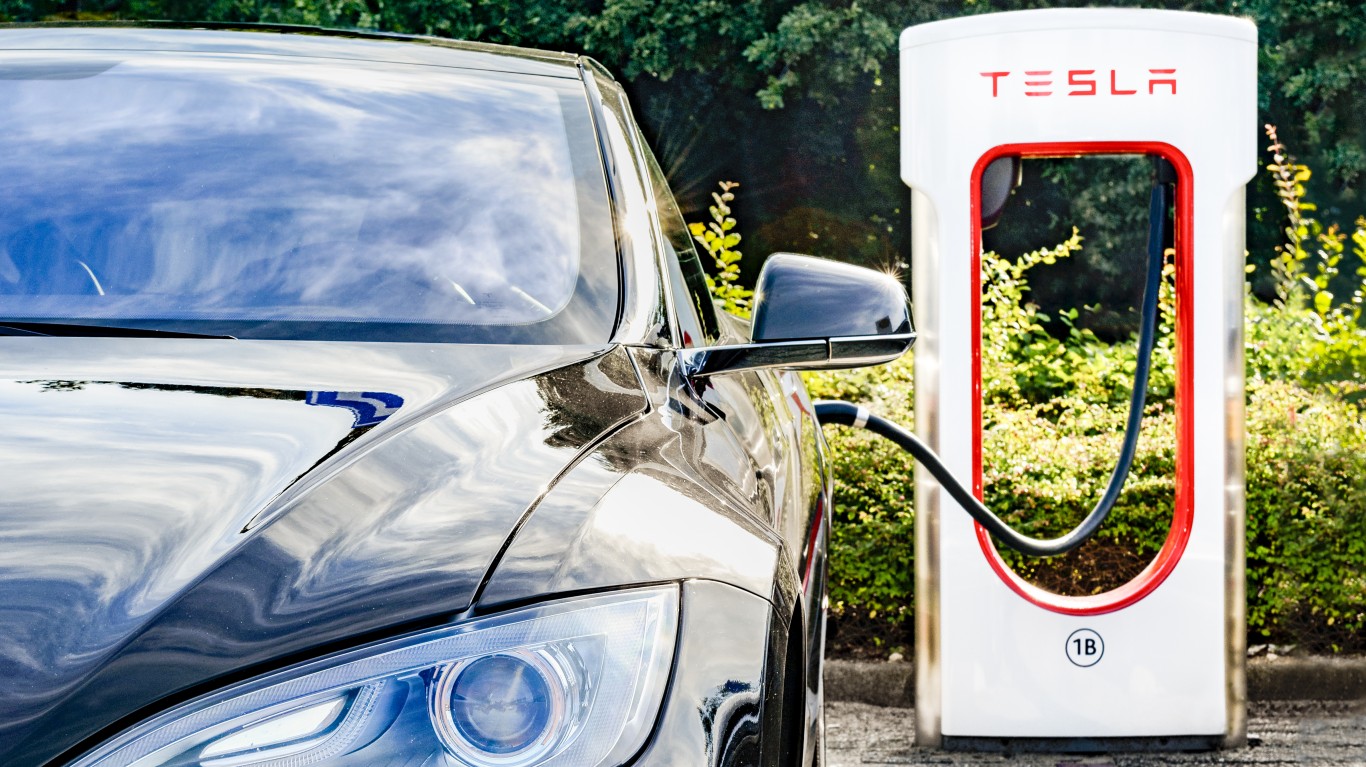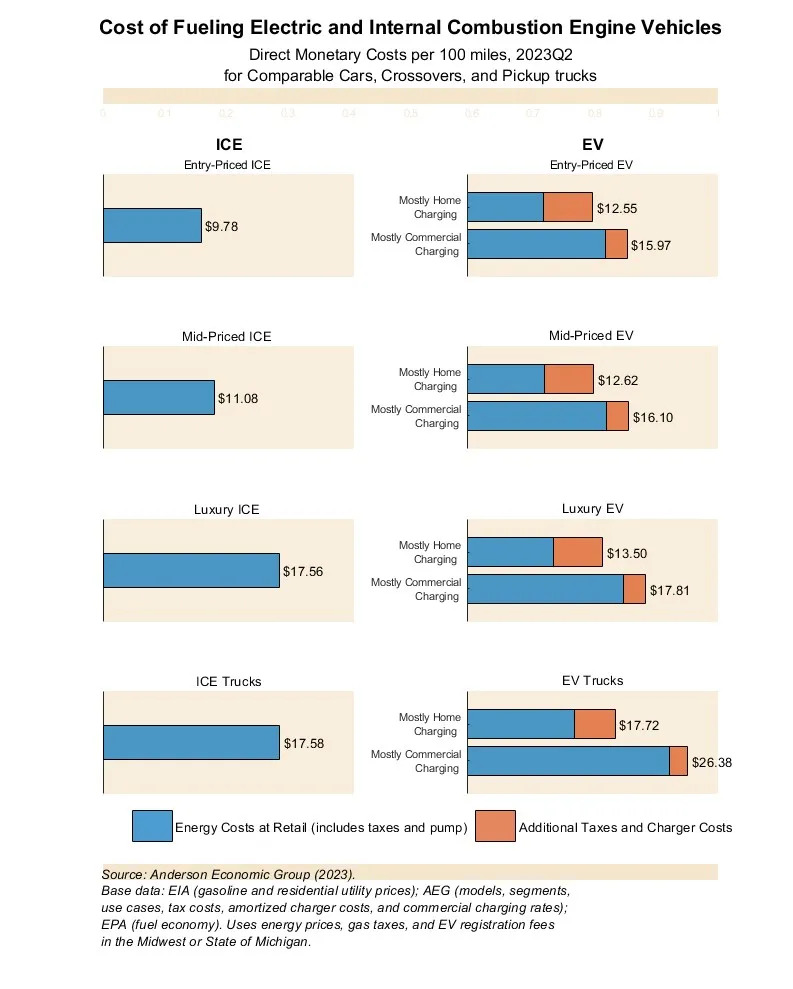Investing
Morning Blast: Palo Alto Networks Surges, Comparing Gas-Powered and EV Ownership

Published:

There is nothing like the unexpected, no matter how small, to give investors the jitters. When Palo Alto Networks announced that it would release its fiscal fourth-quarter results after U.S. markets closed on Friday, the jitters got a bit worse.
Why was the company reporting on Friday afternoon? That’s weird. Must be bad news. Let’s be cautious and sell.
The company announced its earnings release date on August 2. The stock price dropped almost 17% as of Friday’s close. Earnings came in better than expected, and revenue was in line, if a bit short of expectations.
CEO Nikesh Arora apologized for the stir, saying the company was trying to give analysts plenty of time to ask questions before Palo Alto Networks’ sales meeting began on Sunday. If that was the case, why not announce the results on Friday morning?
Whatever the reason, the share price was off to a good start Monday morning, trading up by as much as 13% in the premarket session.
MarketWatch has an interesting story Monday morning about the difference in costs to fill up an internal combustion, fossil fuel-powered vehicle and an electric vehicle (EV). The story cites two reports that reach different conclusions, so we took a look at both.
Energy Innovation Policy and Technology, a self-described non-partisan energy and climate policy think tank, has created a tool that lets people compare the actual cost of a fill-up in their home state. Rather than requiring users to know the kWh cost of electricity and other details for the comparison, the firm has created an EV Fill Up Tool that knows a state’s average gasoline and electricity prices, and the vehicle’s average range on a fully charged battery or tank of gas in different vehicle classes.
In Texas, for example, the cost to fill up a Honda CR-V SUV (gasoline) is $48.86. Fully charging a Tesla Model Y at a public charging station costs $20.92. Fully charging a Hyundai Ioniq 5, a Ford Mustang Mach-E or a VW ID.4 costs $22.63, $25.02 and $25.47, respectively. The costs are adjusted to account for the differences in the vehicles range on a full charge or fill-up.
On the other side of the energy coin, Anderson Economic Group offers research and consulting services in “economics, valuation, market analysis, and public policy.” In a report published August 1, the company released fueling cost estimates for comparable internal combustion engine (ICE) vehicles and EVs in the first half of 2023.
Anderson used “updated gasoline and residential electricity prices, commercial charging prices, tax rates levied on fuel and EVs, fuel economy for popular models in each segment, and the allowance for travel to commercial charging stations. The analysis considers four categories of real-world costs for both ICE and EVs, including energy, taxes, pump or charger, and deadhead miles.”
Here is a chart with the company’s conclusions.
Interestingly, charging a luxury EV or an electric pickup at a home charger are the only cases in which an EV turns out to be equal or less expensive than an ICE vehicle.
According to Google Bard, a UK-based research firm, Frontier Economics, did a study in 2013 to estimate the total cost of gasoline externalities in the United States. The firm estimated an annual cost of between $231.7 and $942.9 billion to pay for “air pollution, climate change, traffic congestion, accidents, and road maintenance.” Here is the session:
Prompt: estimate the cost of externalities to the price of gasoline. externalities include cleaning up emissions, maintaining roads.
Bard response:
The cost of externalities to the price of gasoline is difficult to estimate accurately, as there are many factors to consider. However, a 2013 study by the Frontier Economics consultancy estimated that the total cost of gasoline externalities in the United States was between $231.7 and $942.9 billion per year. This includes the costs of air pollution, climate change, traffic congestion, accidents, and road maintenance.
The study found that the largest cost of gasoline externalities was air pollution, which was estimated to be between $100 and $500 billion per year. This includes the costs of health care, lost productivity, and property damage. The second-largest cost was climate change, which was estimated to be between $60 and $300 billion per year. This includes the costs of sea level rise, extreme weather events, and agricultural losses.
The study also found that the costs of traffic congestion, accidents, and road maintenance were relatively small, but still significant. Traffic congestion was estimated to cost between $20 and $80 billion per year, accidents were estimated to cost between $10 and $40 billion per year, and road maintenance was estimated to cost between $5 and $20 billion per year.
It is important to note that these estimates are just that – estimates. The actual cost of gasoline externalities could be higher or lower, depending on a variety of factors, such as the specific methods used to estimate the costs and the assumptions made about future trends.
However, even the lower estimates of the cost of gasoline externalities are significant. They suggest that the price of gasoline does not reflect the full cost of its use. This means that consumers are not paying the true cost of gasoline, and that the government is subsidizing the use of gasoline through tax breaks and other policies.
One way to address this problem would be to internalize the costs of gasoline externalities. This could be done by raising gasoline taxes, using congestion pricing, or investing in public transportation. These measures would make gasoline more expensive, but they would also help to reduce the environmental and social costs of gasoline use.
The Anderson chart includes gasoline taxes in the price but breaks out the cost of comparable EV taxes. It does not include the avoided costs of ICE vehicle externalities that all of us pay in one way or another and have paid for decades.
Adding externalities to the cost of an ICE fill-up changes things.
Want retirement to come a few years earlier than you’d planned? Or are you ready to retire now, but want an extra set of eyes on your finances?
Now you can speak with up to 3 financial experts in your area for FREE. By simply clicking here you can begin to match with financial professionals who can help you build your plan to retire early. And the best part? The first conversation with them is free.
Click here to match with up to 3 financial pros who would be excited to help you make financial decisions.
Have questions about retirement or personal finance? Email us at [email protected]!
By emailing your questions to 24/7 Wall St., you agree to have them published anonymously on a673b.bigscoots-temp.com.
By submitting your story, you understand and agree that we may use your story, or versions of it, in all media and platforms, including via third parties.
Thank you for reading! Have some feedback for us?
Contact the 24/7 Wall St. editorial team.